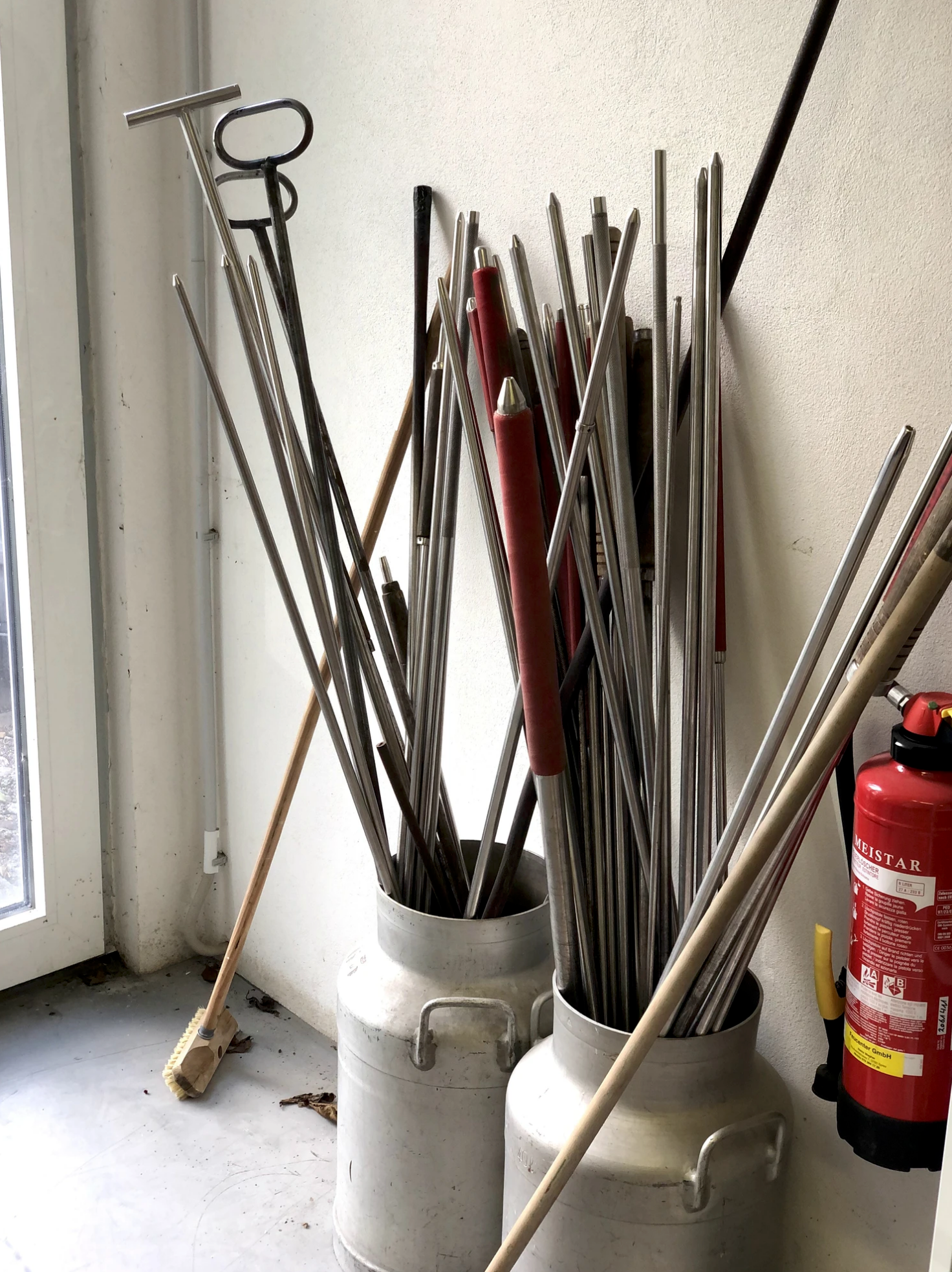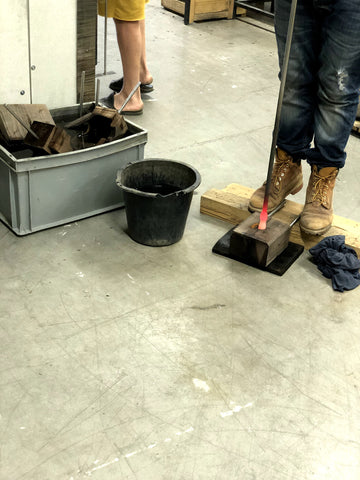depth, color. Confine the sensibility of the creator in a Swiss workshop
2020.10.31
Okamoto worked with a local glass craftsman to realize a recycled glass lighting that captures the scenery of Switzerland ( see the article in the first part ).
The studio is located in a village in the mountains, further on by bus from Interlaken, an old resort town less than an hour by train from Bern.

When you get off the bus, you can see the Alps and paragliders soar in the air. After getting off the bus stop and walking past the corn fields, there is the studio " NEISENGLASS " where we will be working together to produce the lighting.



A “creation” process that goes beyond design
The characteristics of the lighting this time are that it uses recycled glass as a material and that it is made in a way that is different from jewelry. The studio handles recycled glass as a matter of course, so the material selection was relatively easy.
Another challenge is to use a construction method different from jewelry. Jewelry is processed with a method called "burner work", which processes hard glass with a burner, but this time, it is mainly done with "blow work", which is molded by blowing into melted glass.
Okamoto : I'm planning to use blowwork with a mold. The lines I want are sharp, and the mold produces a sharper edge, so I'm thinking of using both a wooden mold and a mold. I studied metalwork during the lockdown, so I'm thinking of polishing it myself once the mold is ready.
I think one of the characteristics of SIRI SIRI is that the production side is also involved in the process of getting close to the skills of the craftsmen, so this time I also included the process of making samples and making molds. I think there is a meaning in coming. ”

What Okamoto brought to the workshop were drawings, a plaster model, and a first sample object.
Okamoto : The feeling of weight, the feeling of holding it in your hand, and the atmosphere of the place is completely different with a model than with just a drawing, so I wanted to make a model.
Based on Okamoto's image, the craftsmen made samples (the two in the back) asking, "How about this way of making?"

Okamoto : The material texture of the first sample (the one with the conical shape in the foreground) is close to what I imagined, so I would like to use the current sample as a base and add bubbles to it so that the light comes out a little more vaguely.
The light bulb in the foreground was designed to be something that users can use for many years without worrying about it.
We compare what we have brought together, what kind of construction method we use, and discuss what can be done and what can't be done. An important feature is the thickness. As mentioned in the first part, he wants to use thick glass to express the depth of the river.


Okamoto : I wanted the glass to be thick in order to express the depth of the Aare River, which is the theme of this project. It's a real thing, so it's important to balance weight and appearance.I think carefully while making a model with plaster."
I'm thinking of two different sizes. Since the housing situation in Japan and Switzerland is different, it seems that Switzerland prefers large ones, while Japan prefers small ones.
Swiss scenery where "nature" is in life
Okamoto thinks about gentle light that pours into the dining room. In Switzerland, we sometimes have dinner by candlelight, and imagine a situation where such a gentle light is on the dining table.
Okamoto : I don't think that kind of situation is common in Japan, but I think it would be great if we could create that kind of atmosphere. If it is an element, handcrafted glass is also a natural element.Nowadays, I think that the maker, the spirituality of the designer, and the story that are contained in things are lost, so it is important for the user to understand it. I want to make things that are transmitted.
For example, Japanese pottery is made up of elements such as soil, water, wind, fire, and human hands. Such things are inefficient, but the feeling when using them is completely different. Feeling closer to nature. Most of the lighting is industrialized, so it would be nice if we could create something that evokes that kind of feeling. ”
During his time in Switzerland, Okamoto came into contact with the culture of thinking deeply about how to spend a long time at home and how to spend it comfortably. Even in Japan, more and more people are thinking about how to spend time at home and about the house itself due to this lockdown. That's why I thought that there would be a demand for interiors that blend natural elements into life in Japan as well.


However, it seems that it is not easy to use colored glass to express lakes and rivers.
Okamoto : Colored glass is made after taking out the glass from the furnace once. In that case, you have to use up the entire amount of colored glass that was made at that time, say 50kg. It will be a challenge to see if we can create a product that will use up all of that.”
Still, he has a strong desire to express the local scenery, and for that reason, working with local craftsmen is meaningful.
Okamoto : I would like to make things in a place close to where I usually live, but that is because I think that what I feel is beautiful from the environment accumulates. It's important that you come."
Living in Switzerland, he seems to be influenced by his aesthetic sense of what is beautiful. For example, a bucket to cool the blowpipe in the workshop.

Okamoto : In Switzerland, many of the tools used to make milk products are elliptical. I also use an elliptical shape.”
Listening to the story and looking at the photos, the life and scenery in Switzerland are very relaxed. What kind of texture will be created when it is incorporated into the design?

Written by Kenji Ishimura


